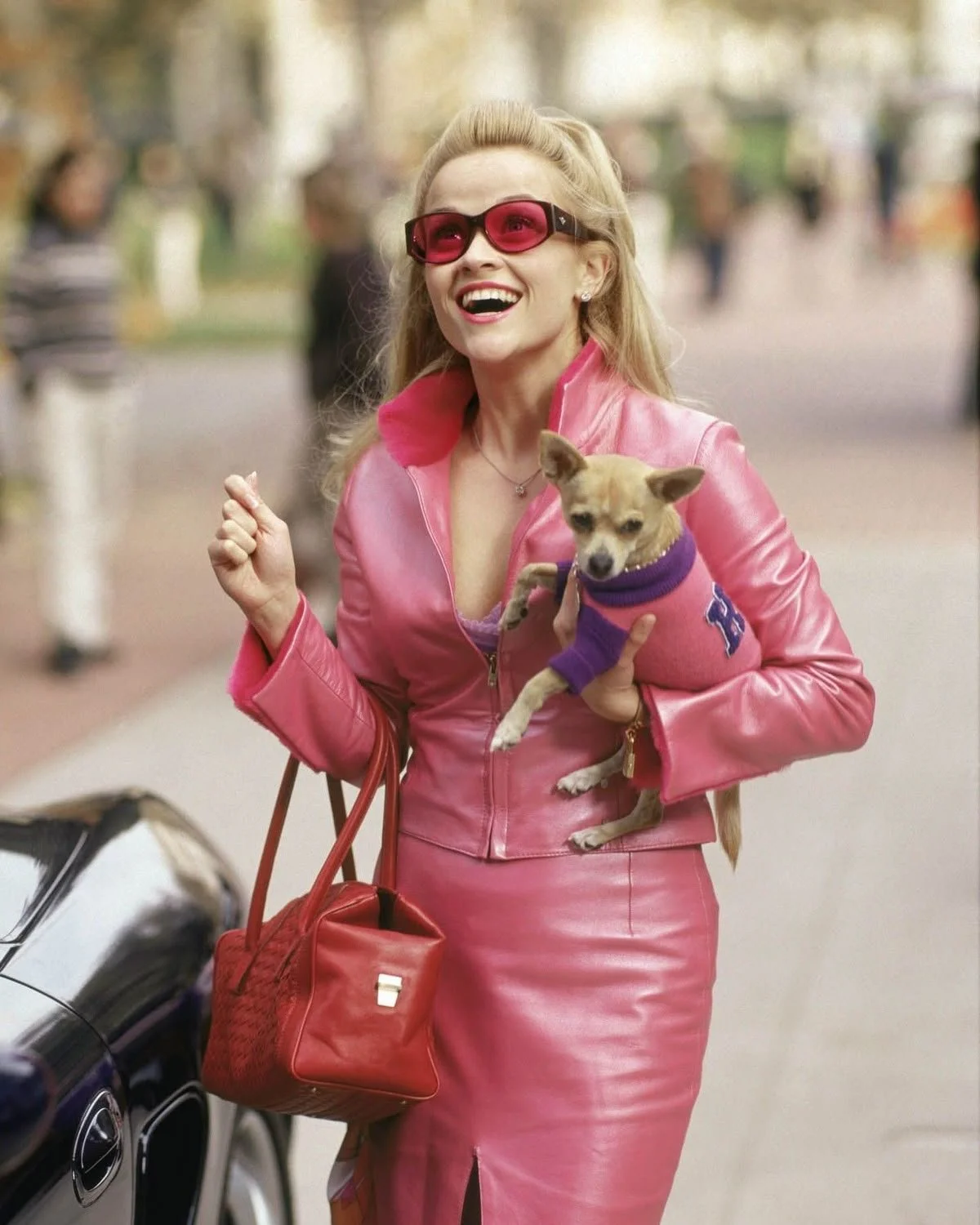Legally Blonde: Pink Suits, Legal Rewrites, and Women’s Power Plays
When Legally Blonde debuted in July 2001, it was more than a comedy—it was a cultural pivot. Directed by Robert Luketic, based on Amanda Brown’s novel, and brought to life by Reese Witherspoon’s unforgettable performance as Elle Woods, the film subverted both sartorial and legal clichés. Let’s explore how Elle’s journey, the film’s success, and Reese’s own evolution continue to resonate.
From Sorority Sister to Harvard Hero
Elle Woods starts as a bubbly Californian sorority leader determined to win back her fiancé by getting into Harvard Law School. But far from a romantic footnote, her story morphs into something much more compelling:
At law school, Elle’s signature pink style and sunny personality earn scorn from peers and professors.
She builds an unlikely friendship with her manicurist Paulette—breaking class barriers and celebrating female solidarity.
Faced with a troubling murder case, Elle uses her knowledge of beauty products to reveal the truth—her “weaknesses” become powerful informants.
When Warner Huntington III reappears, Elle rejects him to embrace her own path, graduating with honors and self-respect.
Elle’s arc—from living for a man to living for herself—flips classic chick-flick narratives on their head. She redefines success without changing who she is.
Box Office Triumph and Award-Winning Charm
Budget vs. Box Office: Made for just $18 million, Legally Blonde grossed approximately $142 million globally—nearly eight times its cost
Accolades: Golden Globe nominee for Best Comedy/Musical (film and Witherspoon), MTV Movie Awards sweep (Best Movie, Female Performance, Comedic Performance, Line, Dress)
Legacy: Spawned a sequel (Legally Blonde 2), a musical (Tony-nominated), spin-offs, and a coming prequel series (Elle on Amazon)—plus dozens credit the film for inspiring their careers in law -Fandom
Elle Woods inspired an actual wave of “pink lawyers.” Spectrum News interviewed Layla Summers, a family law attorney who said, “I think the movie is still very relevant… I felt like I was part of a great club of powerful professional women”
Challenging Class, Wealth, and Female Friendship Norms
Legally Blonde dismantles expectations at every turn:
It crosses class divides by centering Paulette, a working-class manicurist who becomes Elle’s ally.
It challenges elite legal culture, turning Elle’s focus on beauty into a gateway to truth and justice.
It foregrounds female friendship, rejecting catty stereotypes and embracing mentorship.
It ends with a moral victory, not romance, highlighting autonomy over attachment.
Elle Woods didn’t just survive Harvard Law—she remade its culture in her own image.
Grace Under Pressure: Elle’s Character Wins Out
One of the most remarkable aspects of Legally Blonde is Elle Woods’ unwavering grace in the face of condescension, cruelty, and competition. Despite being mocked for her appearance, voice, and interests, Elle never retaliates with cruelty. She doesn’t trash talk her classmates—even when they publicly humiliate her. She doesn’t stoop to the level of those who look down on her. Instead, she keeps her head high and her heart open.
Elle leads with kindness, not ego. Even when people like Vivian Kensington (played by Selma Blair) assume the worst about her—painting her as a shallow, manipulative rival—Elle doesn’t lash out. She doesn’t weaponize the truth or try to "win" the battle of perception. She simply stays consistent, showing up with empathy, brilliance, and self-respect.
Eventually, Vivian realizes that Elle isn’t a threat—she’s the real deal. The tension melts away when Vivian sees how steadfast Elle’s character is, how committed she is to justice, and how authentic her actions are. Their budding friendship becomes one of the film’s quiet triumphs: two women from vastly different social circles, backgrounds, and expectations realizing they’re not enemies—they’re allies.
Calling Out Toxicity Without Screaming It
The film also subtly calls out toxic male/female dynamics. Warner expects Elle to remain a decorative accessory, not a partner. Professor Callahan—Elle’s mentor—tries to take advantage of her, undermining her credibility. The film doesn’t resort to melodrama—it simply shows the reality: that charm, intelligence, and beauty don’t protect women from being underestimated or objectified.
But instead of turning cynical or bitter, Elle walks away with integrity. She finds new support systems, builds genuine friendships, and continues her journey with grace, resilience, and fierce independence.
Reese Witherspoon: Stepping Out of Elle’s Shadow
Elle Woods launched Reese Witherspoon as more than a comedic ingenue. Today, she is a Hollywood powerhouse and a champion for women’s stories:
Accolades: Academy Award (Best Actress for Walk the Line), Golden Globes, SAG, BAFTA, Emmy
Net Worth: Estimated at around $440 million, thanks in part to her company Hello Sunshine—worth ~$900 million when sold to Blackstone in 2021
Producing Power: Behind HBO's Big Little Lies, Apple TV+'s The Morning Show, Hulu’s Little Fires Everywhere—all spotlighting nuanced female characters and diversity -VanityFair
Entrepreneurship & Advocacy: Founder of Draper James, Reese’s Book Club, and author of Whiskey in a Teacup. Board member of the Children’s Defense Fund and Avon global ambassador supporting women's causes
Literary Expansion: Co-authoring a 2025 thriller with Harlan Coben and releasing children’s books in the Busy Betty series -People
Reese has transformed Elle’s spirit into lasting infrastructure for women in media, law, literature, and lifestyle.
Legally Blonde endures because it did more than entertain—it empowered. Elle Woods showed that femininity and intelligence are not mutually exclusive. Reese Witherspoon has carried that message forward, building a multi-platform empire that empowers women through storytelling, commerce, and advocacy.
From sorority queen to self-made mogul, the journey from Elle to Reese proves that being unapologetically yourself—whatever shade of pink that wears—is a powerful form of rebellion.



